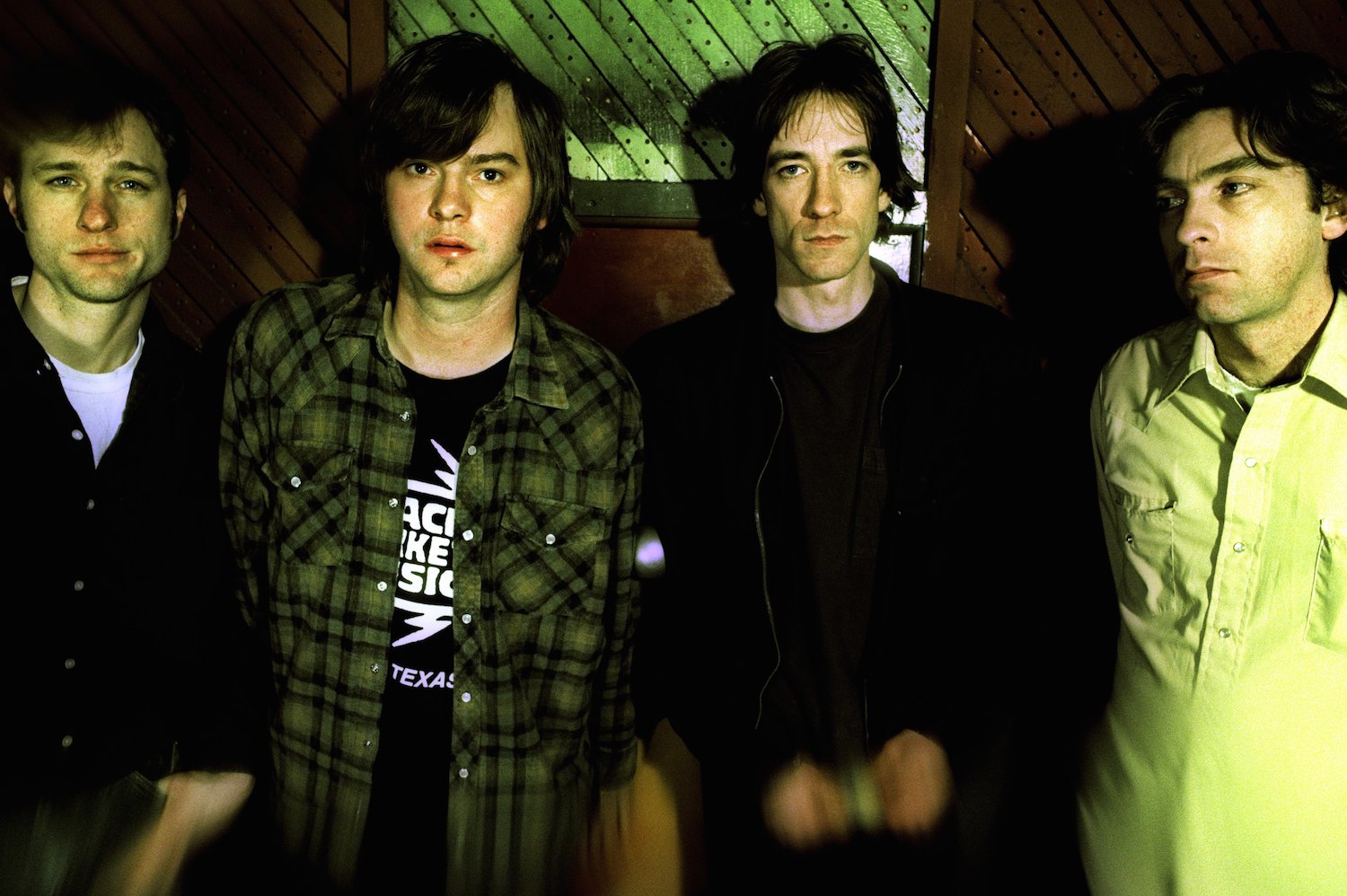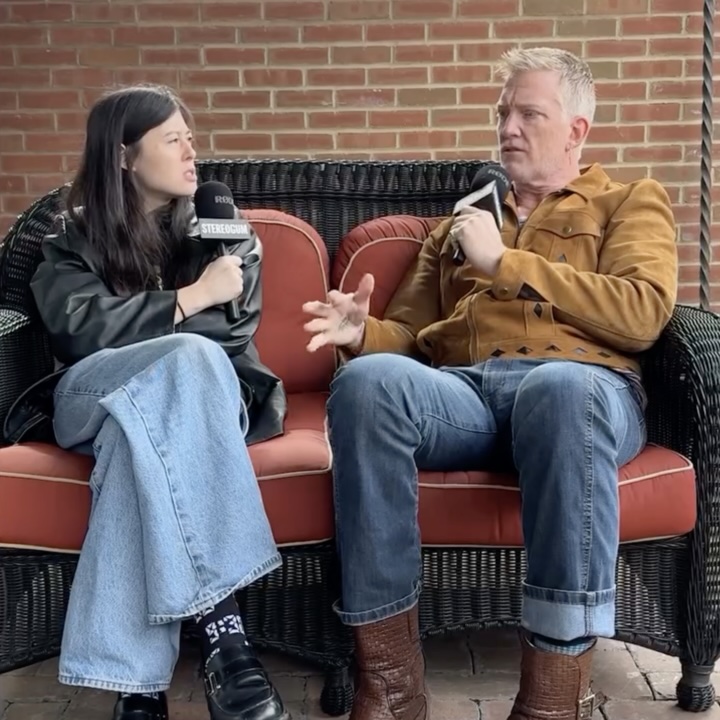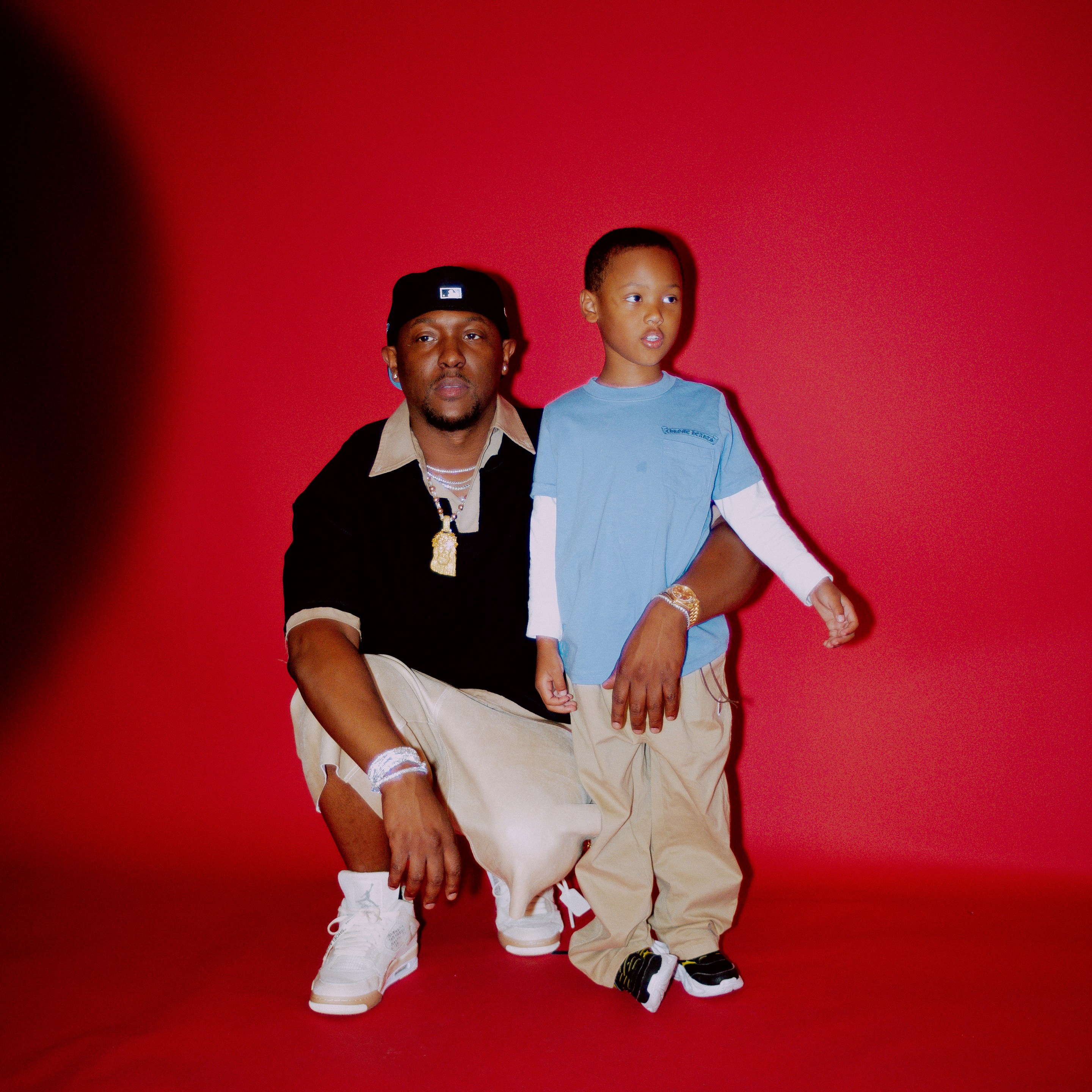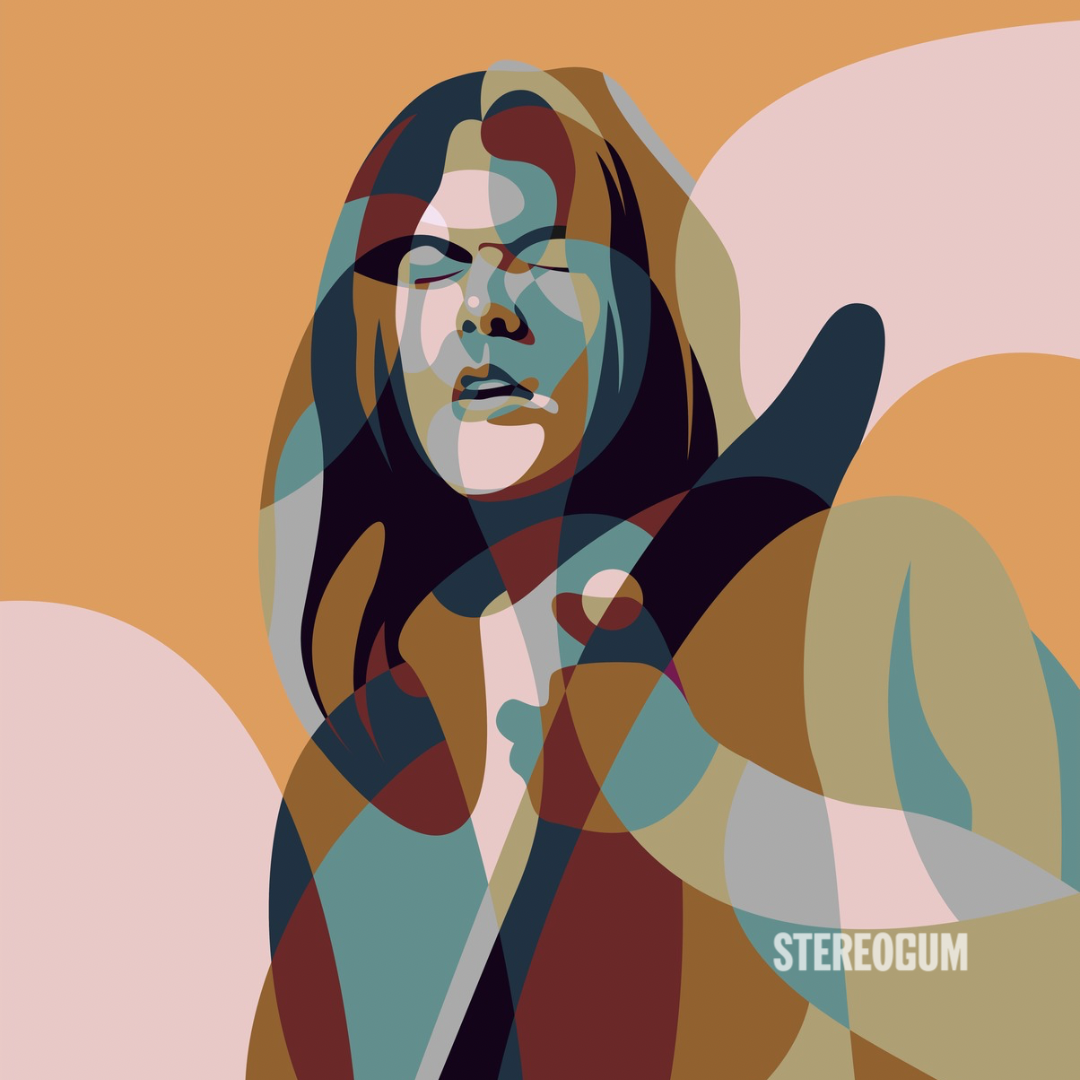Son Volt's 1995 debut, Trace, is an album full of highways and backroads, maps and legends. Sturdily constructed from scraps of rusted country and strange, white-line-feverish imagery, these songs conjure long nights behind the wheel, your only company whichever radio station happens to come through clearly. "Switching it over to AM, searching for a truer sound," Jay Farrar sings on opener "Windfall," as the fiddle and pedal steel two-step around him. "Can't recall the call letters, steel guitar and settle down."
It's ideal road-trip music, even if Farrar sounds like he's driving to outrun his troubles. Barely a year before the album's release, Farrar had been in another band, Uncle Tupelo, who were maybe not the founders of the '90s alt-country movement, but were certainly its chief fomenters. Hailing from the dying industrial town of Belleville, Illinois, they found inspiration in the Carter Family and the Minutemen alike, writing folk tunes but playing them with punk ferocity. After four influential albums together -- including 1993's Anodyne, both their major label debut and their swan song -- the group acrimoniously parted ways, with members Farrar and Jeff Tweedy trading words and punches onstage and off.
Son Volt emerged from the debris with a heavier sound grounded in crunchy classic-rock riffs and Farrar's impressionistic lyrics, and the band even notched a minor hit with their first single, "Drown." Two decades later, Trace is getting the deluxe reissue treatment, which includes two remasters (one for CD, the other for vinyl), a handful of early demos, and a second disc featuring a live set from a 1996 show at the Bottom Line in New York City.
Trace remains an album rooted in the past. Especially during the '90s heyday of alt-rock and Clear Channel, the very idea of AM radio was almost quaint, as though Farrar's dial was picking up broadcasts from some dark corner of history. But his subject isn't merely old classic rock and country tunes, but more generally those fleeting moments that we barely think to savor before they're gone forever. These songs try to freeze those moments just as they take in these sweeping American vistas through the windshield.
Farrar isn't one for such grand statements, unless of course it's in a song. Over the decades he has developed a reputation as a tough interview, generally taciturn and unforthcoming, but when I spoke to him recently, he seemed eager to revisit this era in his life and career. "I had moved down to New Orleans," he explains, "and I was driving up to St. Louis and Minneapolis regularly. It was a liberating time for me both personally and creatively. I was living in a new city, doing a lot of traveling, taking a lot of time to reflect. A lot of lyrical ideas were coming to the surface while I was driving, and sometimes I could construct melodies and putting stuff together in the car. It was fertile in that respect."
We're also premiering the live and demo versions of Trace's "Drown," both of which are available on the reissue. Check them out below.
STEREOGUM: What took you to New Orleans?
FARRAR: I just felt the need to get out of St. Louis at that time. I had never really lived anywhere else, and New Orleans seemed like a good choice. I visited there as a kid, and I just felt like it was -- and still is -- an amazing place with so much culture and this amazing overall aura. I just finished a book called Empire Of Sin, written by a guy named Gary Krist, which goes through the evolution of jazz in New Orleans, so I learned more about the history of the city. But I moved there because I had always wanted to learn about New Orleans.
STEREOGUM: It sounds like you were probably away from the city as much as you were in the city.
FARRAR: I was doing a lot of driving. I think it was 24 hours to Minneapolis, and I essentially followed the route of the Mississippi River. Along the way I went through areas that had a lot of musical history. Whenever I was traveling, I would swing through the Mississippi Delta or drive Highway 61, which goes through St. Louis. I got to see sections of the country that I had never seen before, whether it was up in Iowa or Wisconsin or Minnesota.
STEREOGUM: That seems to come through most vividly and directly on Trace's opener, "Windfall."
FARRAR: It does. I was doing that drive from New Orleans north, and a lot of times I would check in with AM radio, where you could find a lot more varied musical palette. Sometimes I would tune in to Mexican radio stations, but more often than not, I would search for this one radio station that came out of New Orleans called the Road Gang. They would play a lot of classic country, so when I was driving, I would listen in and hear Buck Owens and George Jones and Merle Haggard. That's the aesthetic I was going for with Trace, trying to incorporate some of that instrumentation -- acoustic guitar and fiddle.
STEREOGUM: Trace introduces a band that had a distinct sound right off the bat, one that was rooted in what you had been doing with Uncle Tupelo but had its own personality.
FARRAR: I was ecstatic to be playing music with a pedal-steel guitar player and a fiddle player -- Eric Heywood and Dave Boquist, respectively. And Jim's backing vocals were excellent, as were Dave's multi-instrumental abilities without a doubt. There was a shared sensibility there that allowed a lot of these songs to take off. I haven't played with those guys since 2004. I like those guys. We spent a lot of time together and we accomplished more than we expected, I think, but the last record was done with different guys.
STEREOGUM: There's an open-ended quality to the songwriting on Trace, which I think Uncle Tupelo's last album had led up to. Have these songs opened up even more in the last 20 years? Do you get new meanings from them now than you did at the time?
FARRAR: I'm not sure [about] a new meaning. When I listen back now, I think the band just sounds good and visceral, but not polished -- which is the way a rock band should sound. In general, lyrics do seem to work that way, where you think you're putting down a certain meaning when you're writing, and oftentimes a new meaning is revealed later when you listen to it again. But I'm drawn to people who write lyrics like that, specifically Bob Dylan, who leaves his lyrics open for interpretation. I felt like that nonlinear approach was something that worked for me, at least creatively, so that's where I went with it. Leaving things open to interpretation perhaps lets them take on new meaning as time goes on.
STEREOGUM: To me, the imagistic quality of the album, especially on a song like "Ten Second News," suggests travel and movement.
FARRAR: I think you're right. That's essentially what you do when you're in a band. You drive around. You look at maps to figure out where you're going. You soak up a lot of images along the way, and that always finds its way into the writing in one way or another.
STEREOGUM: Hearing the album again, I wondered if that final song -- a cover of the Faces' "Mystifies Me" -- might work as an ode to the road and maybe to country music. It doesn't sound strictly like a love song in this context.
FARRAR: "Mystifies Me" was a Ron Wood song, so it's acknowledging the British influences. During rehearsals for this record, we would sit around in Dave Boquist's apartment, and one time he pulled out this Faces record that "Mystifies Me" was on. I was already a huge Faces fan, but I wasn't very familiar with that song. But I decided to record it. It was just something that was different from what we had been doing. It was a way to relax, I think, and after we recorded the song, we realized that it added a different element to the overall collection of songs and should be included. It definitely tapped into a shared sensibility. The Stones and the Faces were bands we were definitely inspired by, along with classic country music.
STEREOGUM: And those British bands were inspired by classic country as well.
FARRAR: Indeed. It's always interesting to hear the way they take in that inspiration from American music, put it through the grinder, put their own stamp on it, and send it right back. Usually, really good musical movements are created when different forms and cultures collide. Something new comes out of it.
STEREOGUM: Tell me about the demos on this reissue. They sound like you had very precise ideas about how these songs should sound.
FARRAR: There was a lot of experimentation going on with me, because I had never engineered anything before. I was using a Tascam four-track and was getting into that. Also, I was trying to approximate the sound of a pedal-steel guitar and bought what's called a B-Bender. It's something that you put on a Telecaster to approximate that sound, and that's what you hear on the "Windfall" and "Out Of The Picture" demos. The demos seemed like something that should be added to the reissue. They provide a good contrast to the studio versions, and you can see the developments of the songs from the demos to the studio versions.
STEREOGUM: And the live tracks show how these songs developed even further.
FARRAR: They evolved a little bit more on the stage, in the live show. There's also an early version of "Cemetery Savior" on there that sounds a little different than it did when it came out on the next record, Straightaways. I came across the show when I picked up a bunch of stuff from my management in North Carolina about 15 years ago. Those tapes were by far the most interesting thing, because they're huge tapes -- 15" analog tapes. They look really strange in these big metal boxes. That's what the show was recorded to. There was a mobile truck there. I'd like to say it was the Rolling Stones' mobile recording truck, but I can't say for sure. I had been inside the Rolling Stones' truck, and I'd seen that logo pasted on the door and all over the inside, but I can't remember exactly which show that was. If it wasn't this show, then there's another show out there somewhere that was recorded with the Rolling Stones' mobile recording truck.
STEREOGUM: What's coming up for you after this reissue?
FARRAR: I'm writing songs and putting them together. I've recorded a couple that could be a solo record, and I've written about ten or twelve songs that could be a Son Volt Record. So it's just a matter of moving forward on those and seeing what comes out. But I think something should happen with those songs next year.
//
Son Volt's Trace: 20th Anniversary Edition is out 10/30 via Rhino. Pre-order it here, and check out all the details here. Jay Farrar is also touring behind the reissue. Here are the dates:
10/28 Alexandria, VA @ The Birchmere
10/29 Ardmore, PA @ Ardmore Music Hall
10/30 New York, NY @ City Winery
11/13 Austin, TX @ Texas Union Theater
11/14 Dallas, TX @ The Kessler
12/02 Los Angeles, CA @ The Troubadour
12/03 San Francisco, CA @ Slim's
12/05 Portland, OR @ Aladdin Theatre
12/06 Seattle, WA @ Tractor Tavern






